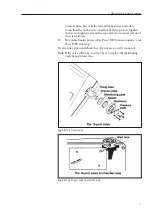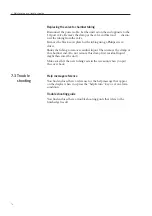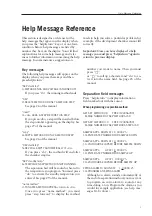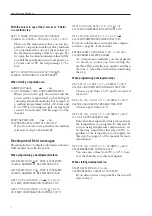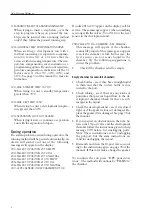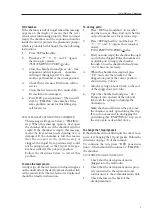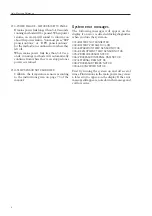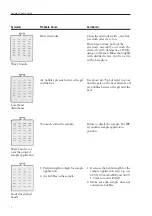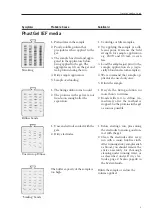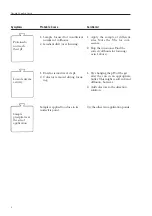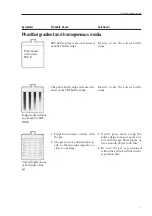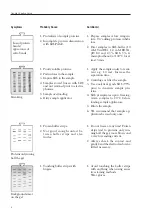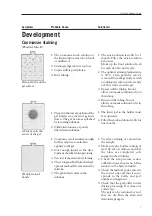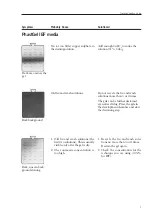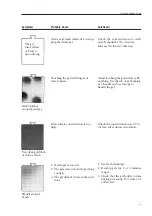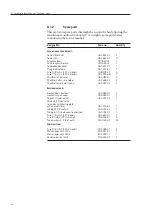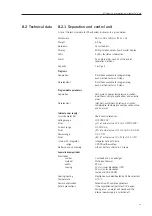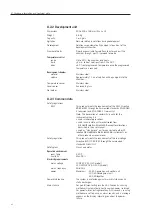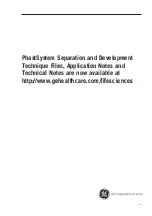
7
Solution(s)
1. The stock solution is stable for 1
month. Filter the stock solution
before use.
Make up the final solution fresh
for each day. Do not recycle.
2. The optimal staining temperature
is 50°C. Stain particles can be
removed from the gel surface with
a soaking wet cotton swab. Gently
rub the swab across the gel.
3. Ensure out the tubing. Do not
allow coomassie solution to dry in
the tubing.
4. Rinse out the tubing. Do not
allow coomassie solution to dry in
the tubing.
1. The lower gel in the holder must
face upwards.
2. Filter the stock solution (stable for
one month).
1. Try silver staining or concentrate
the sample.
2. Make sure the bottles contain at
least 80 ml of solution, and that
the tubes are completely sub-
merged in the solutions.
3. Check the temperature sensor
calibration (see chapter on Main-
tenance in the System Guide).
4. Check the method; make sure it is
the correct one and that it corre-
sponds to the bottle and port
number arrangement.
5. Check that the gel holder rotates
during processing. If it does not,
call service.
The gels can be restained, even if
they are dry. Run the stain and
destain steps again.
Symptoms
Stain particles on the
gel surface
A blue area in the
center of the gel
Weakly stained
bands
Development
Coomassie staining
(PhastGel Blue R)
Probable Cause
1. The coomassie stock solution or
the final solution was too old and/
or unfiltered.
2. Staining temperature is too low.
3. Cupric sulfate precipitates.
4. Dirty tubing.
1. The gel in the lower position of the
gel holder was inserted gel-side
down. The gel becomes splashed
by incoming solutions.
2. Old stain solutions, or poorly
filtered stain solutions.
1. Coomassie is not sensitive enough
for the sample concentration
applied to the gel.
2. Not enough liquid in the deve-
lopment chamber during staining.
3. Too low temperature for staining.
4. The wrong method from the devel-
opment method file was started by
mistake.
5. The gel did not rotate in the
solutions.
Trouble Shooting Guide

